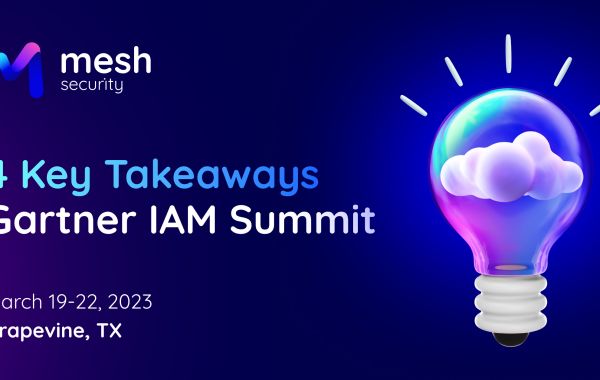Cybersecurity mesh architecture
The Gartner Identity and Access Management (IAM) Summit is an annual event that brings together IAM professionals to share their insights, knowledge, and best practices in the rapidly evolving field of IAM. This year, the summit provided a unique opportunity to learn about the latest trends and innovations in IAM and connect with other professionals and vendors in the field. In this blog post, we will highlight the top four takeaways from the Gartner IAM Summit 2023 and discuss why they are important for organizations looking to improve their overall security strategy.
1# Identity-First Security as the North Star of your Security Strategy
The first takeaway highlights the importance of context-aware policies for identity-first security strategies. Experts predict that by 2026, 70% of identity-first security strategies will fail unless organizations adopt continuous and consistent context-based access policies.
Identity + Context == The new perimeter.
As cyber threats become increasingly sophisticated, adopting an identity-first security mindset is essential. This requires a continuous effort to identify and address vulnerabilities that attackers can exploit. For instance, the SolarWinds attack highlighted the importance of re-authenticating users before allowing them to register a new phone as a multifactor authentication device.
However, implementing context-aware policies presents challenges, including the use of different languages across different security tools. To address this, new standards such as Open Policy Agent (OPPA) and Identity Query Language (IDQL) are emerging, enabling organizations to author policies for one tool and translate them to others.
Fortunately, the industry is moving towards a more comprehensive, mature, and measurable zero-trust program. It’s estimated that by 2026, 10% of large enterprises will have such a program in place, up from less than 1% today. Nevertheless, achieving identity-first security is an ongoing effort, and continuous reassessment of security measures is crucial.
Adopting an identity-first security mindset, continuously assessing vulnerabilities, and adopting context-aware policies are critical in today’s cyber landscape. With the emergence of new standards like OPPA and IDQL, maintaining consistent and continuous security policies across different tools and applications will become easier. As more organizations embrace zero-trust programs, we can expect a more secure digital future.








